Fubotv earnings beat by $0.10, revenue topped estimates
Introduction & Market Context
Revolution Medicines Inc (NASDAQ:RVMD) presented its corporate update in August 2025, showcasing significant progress in its RAS inhibitor oncology portfolio. The company’s stock has been volatile recently, trading at $36.67 after a 4.48% decline on August 6, though it had previously surged 8.9% following its Q1 2025 earnings report.
The biotech firm is positioning itself as a leader in targeting RAS-addicted cancers, which represent a substantial unmet medical need. RAS mutations are present in approximately 90% of pancreatic ductal adenocarcinoma (PDAC), 30% of non-small cell lung cancer (NSCLC), and 50% of colorectal cancer (CRC) cases, representing hundreds of thousands of patients annually in the U.S. alone.
As shown in the following chart of RAS variant frequencies and associated cancer types, Revolution Medicines is targeting the most common and challenging RAS mutations:
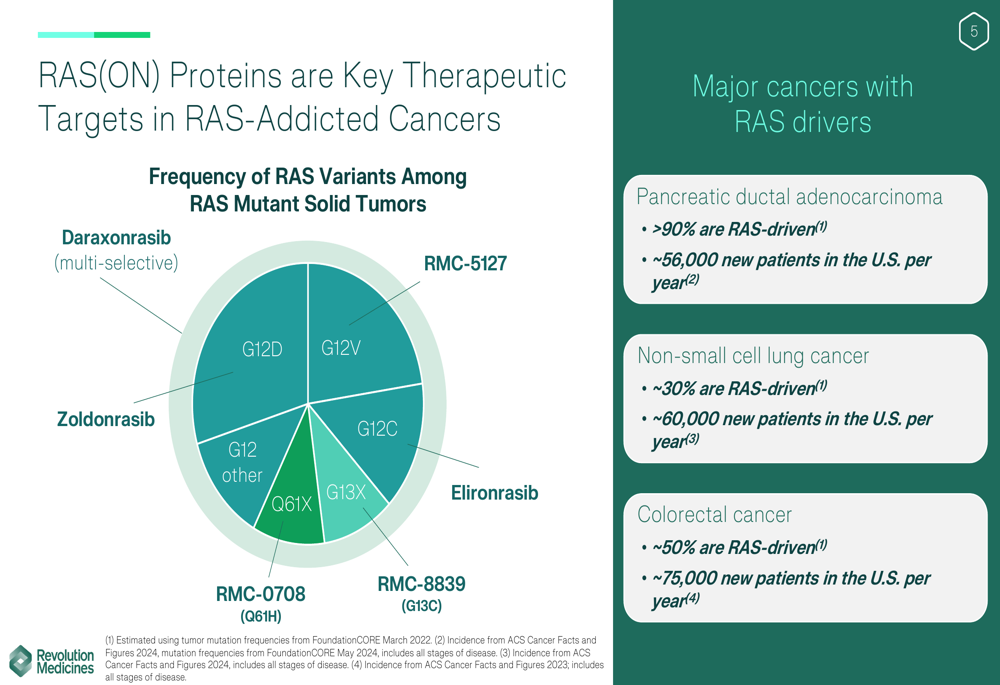
Pipeline Overview and Clinical Data Highlights
Revolution Medicines’ pipeline is built around three key RAS(ON) inhibitors: Daraxonrasib (RMC-6236, multi-selective), Elironrasib (RMC-6291, G12C-selective), and Zoldonrasib (RMC-9805, G12D-selective). The company is pursuing multiple clinical trials across various tumor types and treatment settings, as illustrated in this comprehensive pipeline overview:

Daraxonrasib, the company’s lead compound, has received FDA Breakthrough Therapy Designation for previously treated metastatic pancreatic cancer with KRAS G12 mutations. The drug has demonstrated impressive durability in second-line PDAC patients, with a median progression-free survival (PFS) of 8.8 months and 100% overall survival at 6 months for KRAS G12X patients:
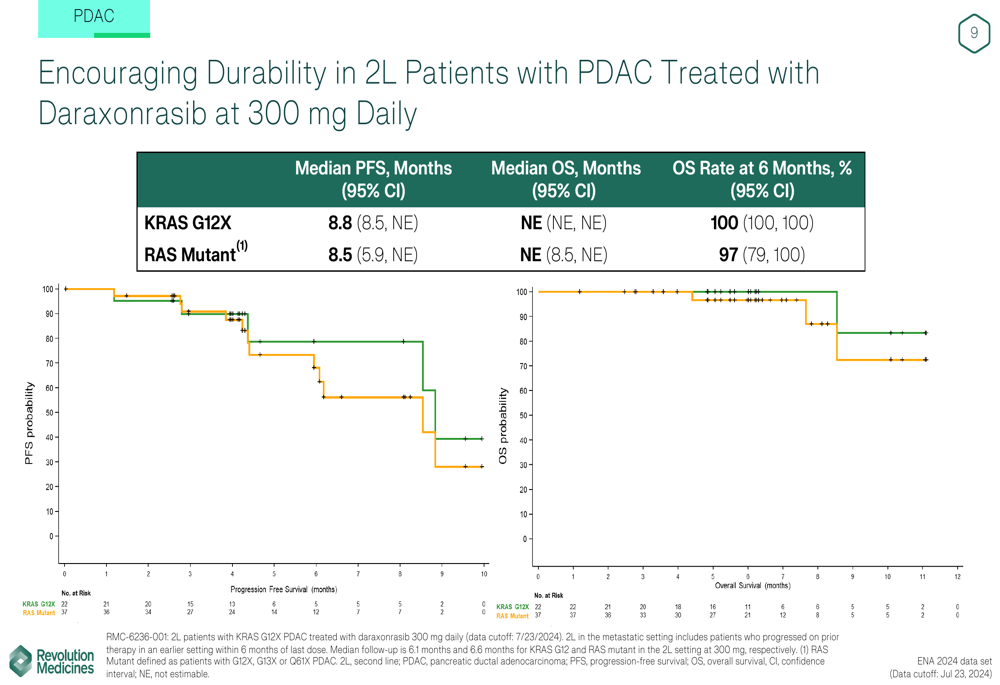
Similarly strong results were observed in NSCLC patients treated with Daraxonrasib, showing a median PFS of 9.8 months and median overall survival of 17.7 months in second/third-line treatment:
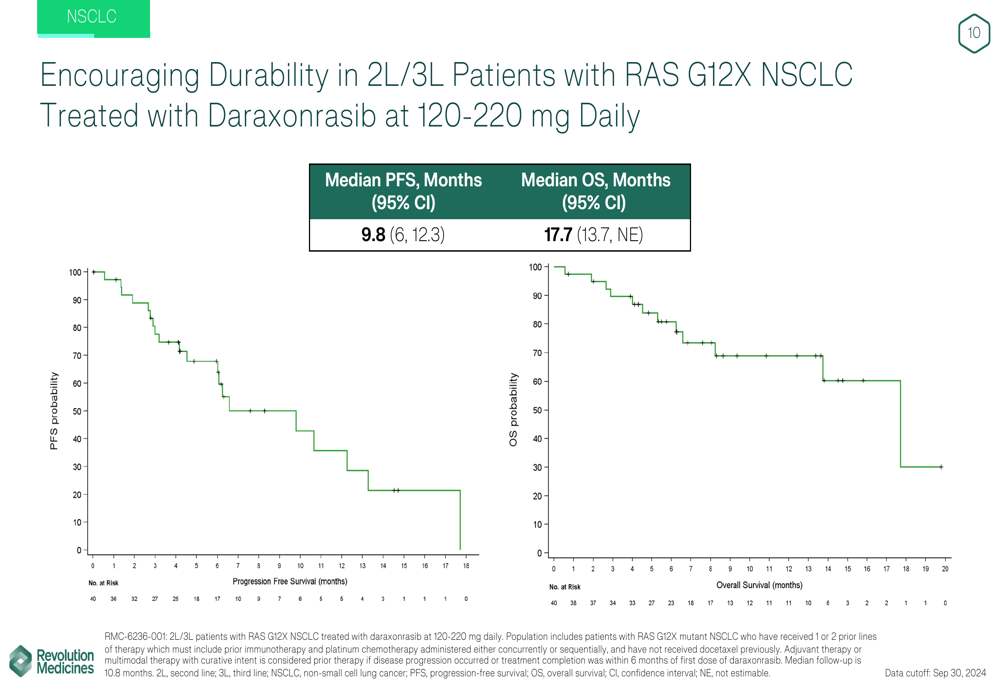
Elironrasib, the company’s G12C-selective inhibitor, has also received FDA Breakthrough Therapy Designation for KRAS G12C-mutated NSCLC in patients previously treated with chemotherapy and immunotherapy. The drug demonstrated a 56% objective response rate (ORR) and 94% disease control rate (DCR) in NSCLC patients, with a median PFS of 9.9 months:
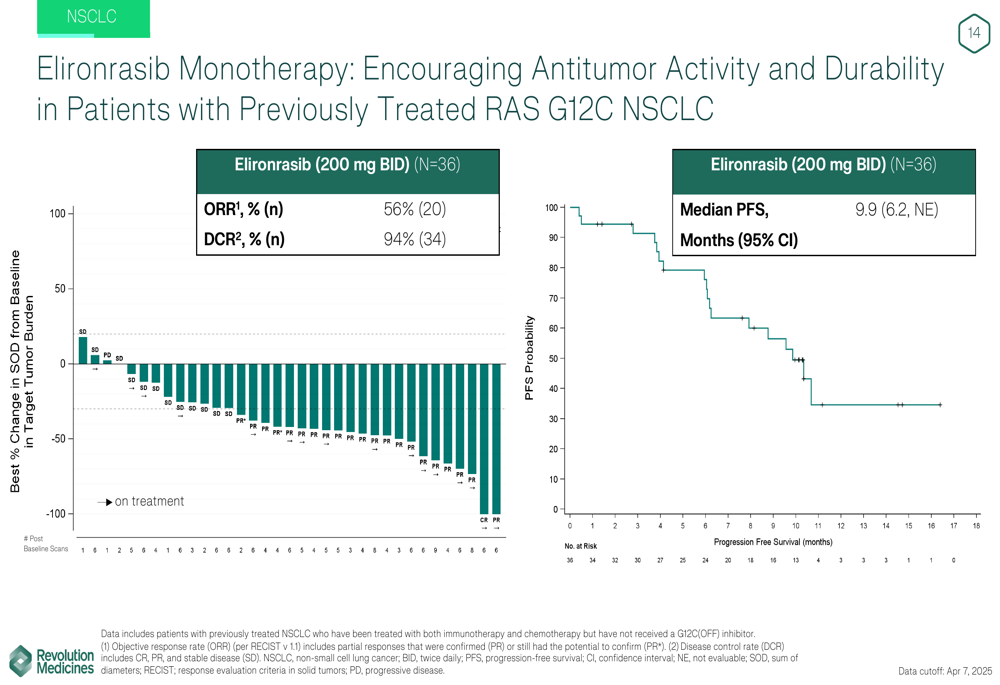
The company is also exploring combination approaches, including a promising doublet of Elironrasib and Daraxonrasib, which showed a 62% ORR and 92% DCR in second-line or later NSCLC patients:
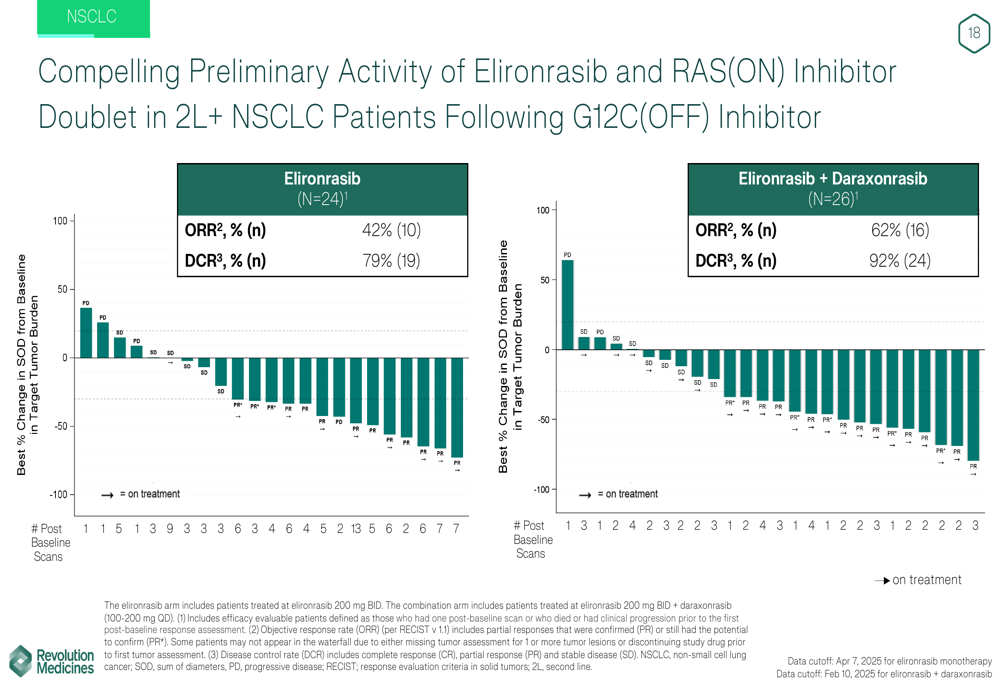
Zoldonrasib, targeting the G12D mutation common in pancreatic cancer, has shown early promise with a 30% ORR and 80% DCR in PDAC patients, and even more impressive 61% ORR and 89% DCR in NSCLC patients:
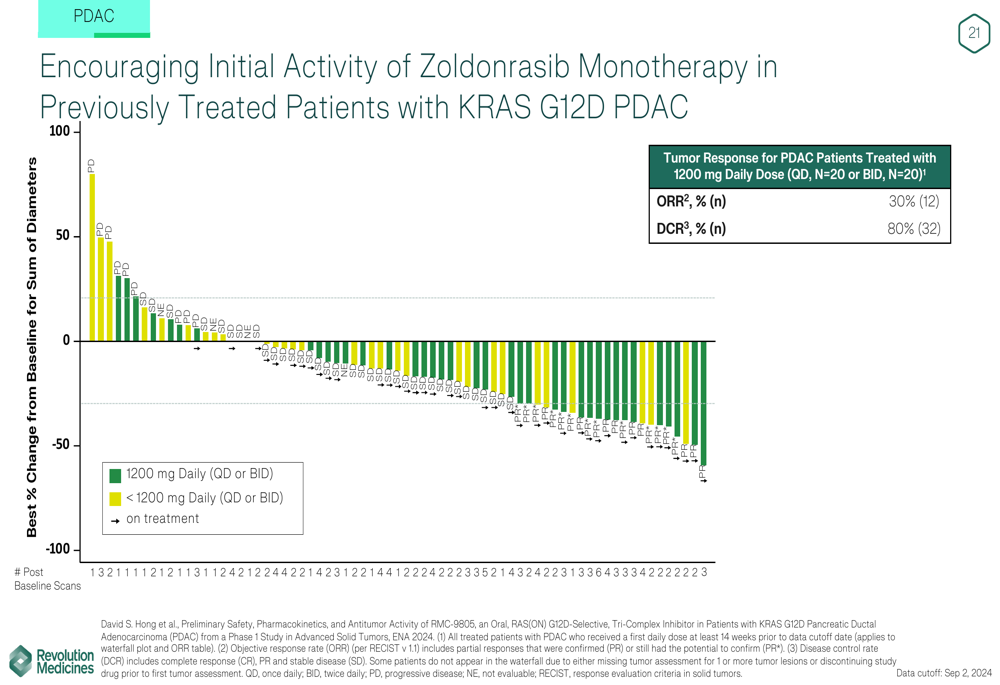
Strategic Initiatives and Commercialization Plans
Revolution Medicines outlined a comprehensive strategy to establish a global targeted medicines franchise for RAS-addicted cancers. The approach spans from discovery through development to commercial delivery:
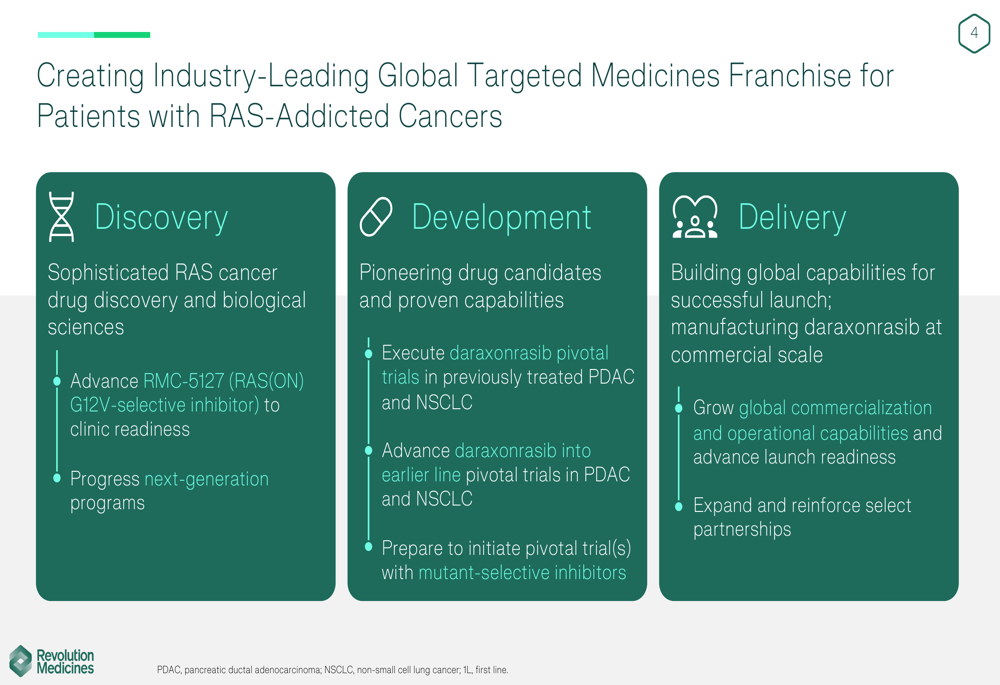
The company’s strategy focuses on maximizing the impact of its RAS(ON) inhibitor portfolio by initially commercializing Daraxonrasib in late-stage disease, then aggressively moving to earlier lines of therapy, developing rational combinations, and continuously innovating with new drug candidates.
A key financial component of Revolution Medicines’ strategy is its partnership with Royalty Pharma, which could provide up to $2 billion in flexible funding tied to clinical and regulatory milestones:
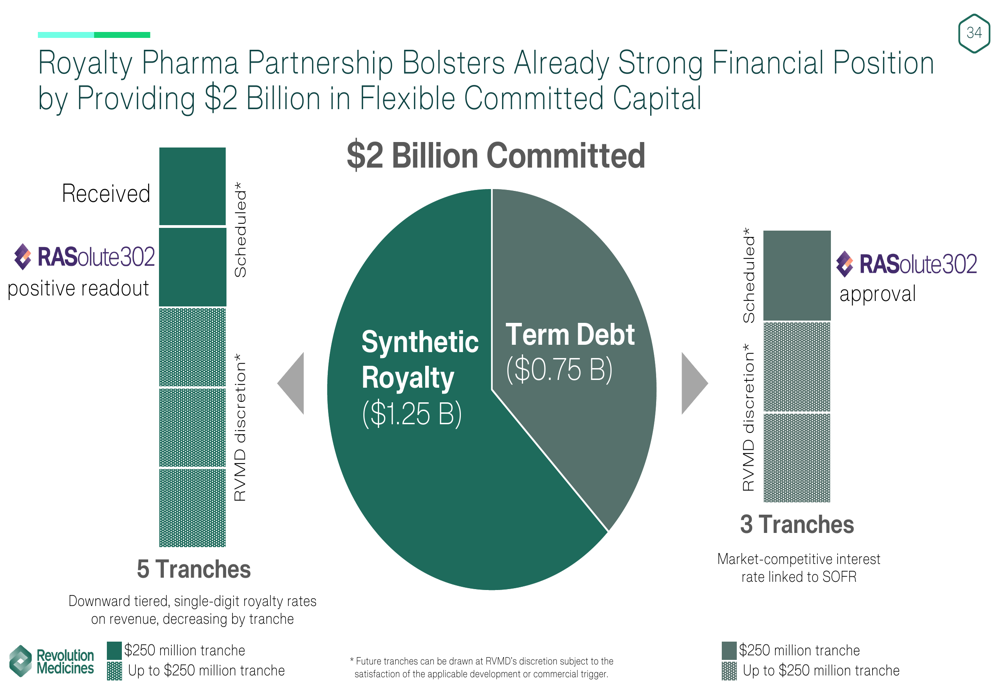
Financial Position and Future Outlook
Revolution Medicines reported a strong cash position of $2.1 billion as of Q1 2025, which it expects will fund operations into the second half of 2027. This aligns with the company’s increased R&D expenses ($205.7 million in Q1 2025 vs. $118 million in Q1 2024) as it advances multiple clinical programs.
Despite the significant net loss of $213.4 million in Q1 2025 (compared to $116 million in Q1 2024), investors have responded positively to the company’s clinical progress. According to the recent earnings report, analysts have set price targets between $57 and $88 for RVMD shares.
The company’s near-term focus includes executing pivotal trials for Daraxonrasib in previously treated PDAC and NSCLC, advancing the drug into earlier treatment lines, and preparing to initiate pivotal trials with its mutant-selective inhibitors. Additionally, Revolution Medicines is expanding its global commercialization capabilities in preparation for potential future product launches.
With multiple data readouts expected in 2026 and a robust cash position, Revolution Medicines appears well-positioned to continue advancing its innovative oncology pipeline while building toward commercialization of its lead assets. However, investors should note that increased R&D and G&A expenses will likely continue as the company progresses toward these goals, and full regulatory approvals for its RAS inhibitors have not yet been secured.
Full presentation:
This article was generated with the support of AI and reviewed by an editor. For more information see our T&C.
